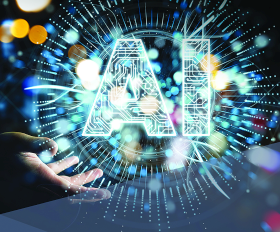

Video surveillance cameras are the electronic eyes of any security operation. In the past, human supervision was needed to make sense of the images captured, and to assess whether certain events posed a security risk or not. With some organisations using hundreds or even thousands of cameras to protect their people and assets, manual review of footage is simply impossible – potentially leaving them vulnerable to security breaches.
To help estates overcome this challenge, and to optimise their security, Hikvision has built advanced artificial intelligence technology into its surveillance solutions. This means that cameras, control-room equipment and back-end infrastructure can now ‘learn’ about potential threats for themselves by recognising people, vehicles and even behaviours.
Proactive detection and prevention
The manual interventions needed with traditional security systems mean that teams were frequently reacting to breaches that had already happened. Artificial intelligence changes all this by recognising potential threats before they impact company’s people or assets – allowing security teams to react immediately to neutralise any potential threat.
For example, Hikvision artificial intelligence solutions can automatically trigger alerts when a person appears in a restricted area, or when a vehicle with a blacklisted number plate enters a site. With alerts delivered in real time, teams can identify and react to security threats and protect people and assets more effectively. And because alerts are automated, potential threats are hardly missed or overlooked.
How does AI work?
Artificial intelligence systems become more intelligent over time, building databases of potential threats and reacting to new events accordingly. This allows systems to ‘think for themselves’ and to alert teams of any suspicious events or people who are caught on camera.
Hikvision’s artificial intelligence technologies use advanced algorithms based on Deep Learning to distinguish between different kinds of security events and threats. Technologies incorporated into the Hikvision portfolio include:
• Facial recognition: which allows law enforcement personnel to identify suspects and commercial teams to identify VIP customers in real time.
• Vehicle identification: which can be used to identify vehicle number plates, and recognise different types of vehicles (even down to make and model), or to trigger alerts when vehicles enter restricted areas.
• Perimeter protection: which helps estates identify real threats by distinguishing people and vehicles from other moving objects and keeping false alarms to a minimum.
• Business intelligence: which employs people counting, queue detection, and heat mapping technologies, so that estates can enhance operational efficiency by making use of the data report.
Why this is great news?
Artificial Intelligence isn’t just useful for identifying security threats – although this is a key strength of the technology. It can also help organisations increase their competitiveness and commercial success.
For example, VIP customers who opt to participate in special marketing promotions or other incentives can be identified so staff can provide the right kind of service at the right time. This gives organisations the opportunity to personalise the service experience, foster loyalty and maximise customer lifetime revenues.
In the same way, Artificial Intelligence can help organisation to better understand customers and meet their needs more effectively – leading to more commercial opportunities. One feature – called people counting – allows stores and commercial centres to map footfall at peak times, ensuring that staffing is optimised to meet demand. At the same time, stores can see which areas of the building customers visit most, and adjust their merchandising and product positioning accordingly to maximise the sales opportunities.
Hikvision has created a family of AI products to maximise the benefits for organisations, such as the DeepinView network cameras and DeepinMind NVRs. The products help to tackle security with facial recognition, monitoring and counting of people, and recognition and detection of vehicles, to name a few. These features all depend on artificial intelligence technology to recognise, classify and respond to security threats.
| Tel: | +27 10 085 8300 |
| Email: | [email protected] |
| www: | www.hikvision.com/africa/ |
| Articles: | More information and articles about Hikvision South Africa |

© Technews Publishing (Pty) Ltd. | All Rights Reserved.